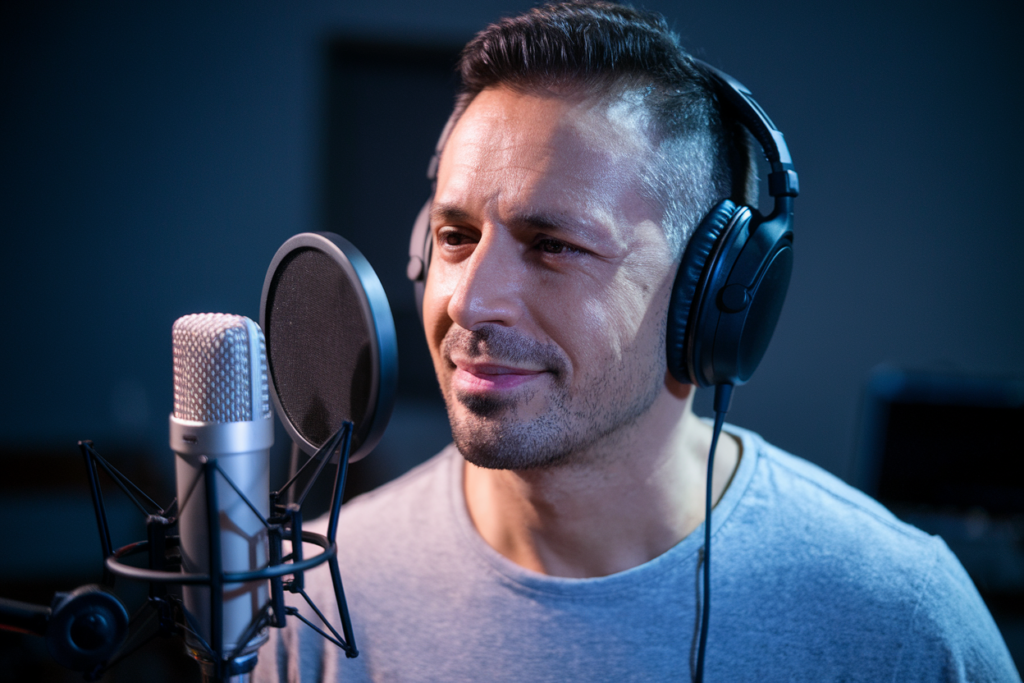Key Takeaways
- Cultural Nuances Matter: Understanding Turkish idioms and cultural references is essential for creating authentic and relatable subtitles.
- Timing and Syncing are Crucial: Properly timed subtitles enhance viewer engagement; ensure they appear in sync with the audio for a seamless experience.
- Conciseness is Key: Keep subtitles brief, ideally 1-2 lines under 40 characters each, to maintain clarity without overwhelming viewers.
- Choose Readable Fonts: Use simple fonts like Arial or Helvetica at appropriate sizes to ensure readability across various devices.
- Thorough Editing is Essential: Always proofread your subtitles to catch spelling, grammar, or punctuation errors before finalizing them.
- Avoid Literal Translations: Focus on conveying the original intent and emotional depth of dialogues rather than sticking strictly to direct translations.
Ever wondered how to subtitle in Turkish and make your videos accessible to a wider audience? Whether you’re a content creator or just want to share your favorite films with friends, mastering Turkish subtitles can open up new horizons. It’s not just about translating words; it’s about conveying emotions, culture, and context.
Subtitling can seem daunting at first, but don’t worry—you’ve got this! With the right tools and techniques, you’ll be able to create engaging subtitles that resonate with viewers. Ready to dive into the world of Turkish subtitling? Let’s explore some essential tips that’ll help you transform your projects into captivating experiences for everyone.
Understanding Turkish Subtitles
Turkish subtitles enhance video content by making it accessible to a wider audience. Accurately translating dialogues is crucial, but subtitling involves much more than that. It’s about capturing the essence of emotions, culture, and context within the language.
When creating Turkish subtitles, consider the following key aspects:
- Cultural Nuances: Understand specific phrases or idioms unique to Turkish. These elements enrich viewer experience and ensure authenticity.
- Timing and Syncing: Ensure subtitles appear in sync with audio. Proper timing prevents confusion and maintains engagement.
- Brevity: Keep subtitles concise while conveying complete thoughts. Aim for clarity without overwhelming viewers with text.
- Readability: Use clear fonts and appropriate sizes. Your audience should read comfortably without straining their eyes.
Remember that effective subtitling can elevate your project significantly. By focusing on these aspects, you create not only readable but also relatable content for your viewers. The right approach transforms ordinary translations into immersive experiences that resonate deeply with audiences familiar with Turkish culture.
Tools for Subtitling in Turkish
Creating effective Turkish subtitles requires the right tools to streamline the process. Various software options and online resources can enhance your subtitling experience.
Software Options
Several software programs cater specifically to subtitling tasks. Here are some popular ones:
- Aegisub: This free, open-source tool offers advanced features for timing and styling subtitles. It supports multiple file formats, making it versatile.
- Subtitle Edit: Use this user-friendly option to create and edit subtitles easily. It allows you to sync text with audio seamlessly.
- Amara: This web-based platform enables collaborative subtitling, allowing teams to work on projects together in real-time.
- Final Cut Pro X: If you’re working on video editing, this professional tool includes built-in subtitling features that simplify the workflow.
These tools help ensure your Turkish subtitles convey context effectively while maintaining proper timing with audio.
Online Resources
Numerous online resources support subtitle creation and offer valuable insights into best practices. Consider these:
- YouTube Creator Studio: Utilize YouTube’s built-in tools for adding subtitles directly to your videos. It’s a great way to reach a wider audience.
- Udemy Courses: Check out courses focused on subtitling techniques and cultural nuances specific to Turkish content. These can provide essential knowledge for beginners or experienced creators alike.
- Subtitles Translator Forums: Join forums where professionals discuss challenges faced during the subtitling process. Engaging with peers can lead to practical solutions and tips tailored for Turkish audiences.
By leveraging these software options and online resources, you’ll enhance your ability to create engaging Turkish subtitles that resonate with viewers while effectively conveying emotions and context.
Steps to Subtitle in Turkish
Subtitling in Turkish involves several crucial steps that ensure the final product is engaging and culturally relevant. Follow these guidelines for successful subtitling.
Preparing the Video Content
Start by selecting your video content carefully. Review it multiple times to understand its themes, tone, and cultural references. Identify any specific scenes or dialogues that require special attention due to emotional weight or cultural significance. Make note of elements like background music or sound effects, as they can influence subtitle timing and placement.
Transcribing the Dialogue
Transcribe the dialogue accurately from the video. Listen closely to capture every word while paying attention to nuances in speech patterns and emotions conveyed by voice actors. Use tools like transcription software if necessary, but review your transcript for accuracy manually. This step lays a solid foundation for creating subtitles that resonate with viewers.
Creating and Timing the Subtitles
Create your subtitles using appropriate software such as Aegisub or Subtitle Edit. Ensure each subtitle appears on screen long enough for viewers to read comfortably without losing track of what’s happening visually. Sync subtitles tightly with audio cues; this step enhances viewer experience significantly. When placing text on screen, keep formatting consistent—choose readable fonts and sizes suitable for various devices.
By following these steps diligently, you can craft effective Turkish subtitles that not only translate words but also convey emotions and context effectively, enriching your video’s overall impact.
Common Mistakes to Avoid
Creating Turkish subtitles involves several pitfalls you should steer clear of to ensure quality and effectiveness.
- Neglecting Cultural Nuances
Ignoring cultural differences can lead to misunderstandings or misinterpretations. Always research the context behind phrases, idioms, and cultural references specific to Turkish audiences.
- Poor Timing and Syncing
Misaligning subtitles with audio disrupts viewer experience. Ensure that your subtitles appear at the right moment, allowing viewers enough time to read without lagging behind the dialogue.
- Overloading Text on Screen
Using too many words in a single subtitle overwhelms viewers. Keep it concise—aim for 1-2 lines per subtitle, ideally under 40 characters per line for optimal readability.
- Choosing Inappropriate Fonts
Selecting difficult-to-read fonts detracts from engagement. Opt for simple, legible fonts like Arial or Helvetica; maintain a font size that is easily readable on various devices.
- Ignoring Editing and Proofreading
Skipping this step leads to errors in spelling, grammar, or punctuation that diminish professionalism. Always review your work thoroughly before finalizing subtitles.
- Translating Literally
Relying solely on direct translation misses emotional depth and tone shifts within conversations. Adapt translations to reflect intent while maintaining the original meaning.
- Disregarding Audience Expectations
Failing to consider what Turkish audiences expect can result in disengagement from your content. Stay attuned to local preferences regarding humor, formality, and expression styles.
By avoiding these common mistakes during the subtitling process, you enhance not only accessibility but also relatability for your audience—making your content more impactful overall.
Conclusion
Creating engaging Turkish subtitles is a rewarding endeavor that opens your content to a wider audience. By focusing on cultural nuances and effective timing, you can ensure your subtitles resonate deeply with viewers. The right tools and techniques will empower you to craft meaningful translations that enhance the emotional impact of your videos.
Avoiding common pitfalls like poor syncing or literal translations will further elevate the quality of your work. With dedication and practice, you’ll transform subtitling from a challenge into an art form, making your content accessible and relatable in Turkish culture. Embrace this journey and watch as your audience grows.
Frequently Asked Questions
What is the purpose of creating Turkish subtitles?
Creating Turkish subtitles enhances video accessibility for a broader audience. Subtitling conveys emotions, culture, and context, making content relatable and immersive for viewers familiar with Turkish culture.
What are some recommended tools for subtitling?
Popular tools for creating Turkish subtitles include Aegisub, Subtitle Edit, Amara, and Final Cut Pro X. These software options provide unique features to streamline the subtitling process and improve overall quality.
How can I ensure my subtitles convey cultural nuances?
To capture cultural nuances effectively, carefully select video content that reflects its themes. Understand the context behind dialogues and use appropriate language that resonates with the target audience.
What are common mistakes to avoid when subtitling?
Common mistakes include neglecting cultural nuances, poor timing or syncing issues, overloading text on screen, using inappropriate fonts, failing to edit or proofread, translating literally, and ignoring audience expectations.
How do I make my subtitles readable?
Ensure your subtitles are readable by maintaining brevity in text length and using clear fonts at an appropriate size. Additionally, sync them accurately with audio cues to enhance viewer experience.
Can anyone learn to create effective Turkish subtitles?
Yes! With the right tools and techniques outlined in this article, anyone can learn to create effective Turkish subtitles despite initial challenges. Practice will help you master this skill over time.







